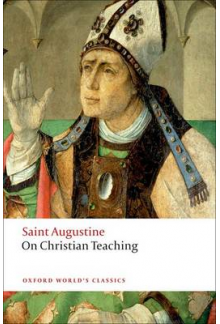Augustine, Saint
On Christian Teaching
Balsavo 0
ISBN: 9780199540631
Autorius : Augustine, Saint
Leidimo metai: 2008
Leidėjas: OWC
Puslapių skaičius: 208
Leidinio kalba: Anglų
Formatas: Minkšti viršeliai
Autorius : Augustine, Saint
Leidimo metai: 2008
Leidėjas: OWC
Puslapių skaičius: 208
Leidinio kalba: Anglų
Formatas: Minkšti viršeliai
Pilna kaina:
10.00 €
- % perkant internetu
Kaina:
Šių parametrų produkto neturime
Likutis pakankamas
Pristatymo terminas Lietuvoje 2-6 savaitės
Pristatymo terminas Lietuvoje 1-4 darbo dienos. Galimas vėlavimas, pristatymo iki Kalėdų garantuoti negalime
Pristatymo terminas Lietuvoje 2-6 savaitės
Pristatymo sąlygos
Aprašymas
The De Doctrina Christiana (“On Christian Teaching”) is one of Augustine’s most important works on the classical tradition. Undertaken at the same time as the Confessions, it sheds light on the development of Augustine’s thought, especially in the areas of ethics, hermeneutics, and sign-theory. This completely new translation gives a close but updated representation of Augustine’s thought and expression, while a succinct introduction and select bibliography present the insights of recent research. B’There are certain rules for interpreting the scriptures which, as I am well aware, can usefully be passed on to those with an appetite for such study…’ On Christian Teaching is one of Augustine’s most important works on the classical tradition. Written to enable Christian students to be their own interpreters of the Bible, it provides an outline of Christian theology, a detailed discussion of ethical problems, and a fascinating early contribution to sign theory. Augustine also makes a systematic attempt to determine what elements of classical education are permissible for a Christian, and in the last book suggests ways in which Ciceronian rhetorical principles may help in communicating the faith. This long-needed, completely new and up-to-date translation gives a close but stylish representation of Augustine’s thought and expression. References to the classical background are carefully explained and Roger Green’s introduction describes the aims and circumstances of the work, and outlines its influence on major figures in the Middle Ages and the Renaissance.
Atsiliepimai (0)
Palikite atsiliepimą

